Sisig was always our weekend indulgence, until Papa's doctor advised him to watch his cholesterol. That's when I discovered this game-changing Bangus Sisig recipe, which has become our family's new favorite.
The familiar sizzle, tangy calamansi kick, and that perfect spicy punch are all there, but made healthier with flaky milkfish instead of the traditional pork face.
Every time I serve this on our sizzling plate, Papa's eyes light up just like they used to when we'd order sisig at our favorite carinderia.
Whether you're health-conscious or just craving that classic sisig experience, this bangus version will hit all the right spots. It's so good that even my sisig-purist uncle asked for the recipe during our last family gathering.
Jump to:
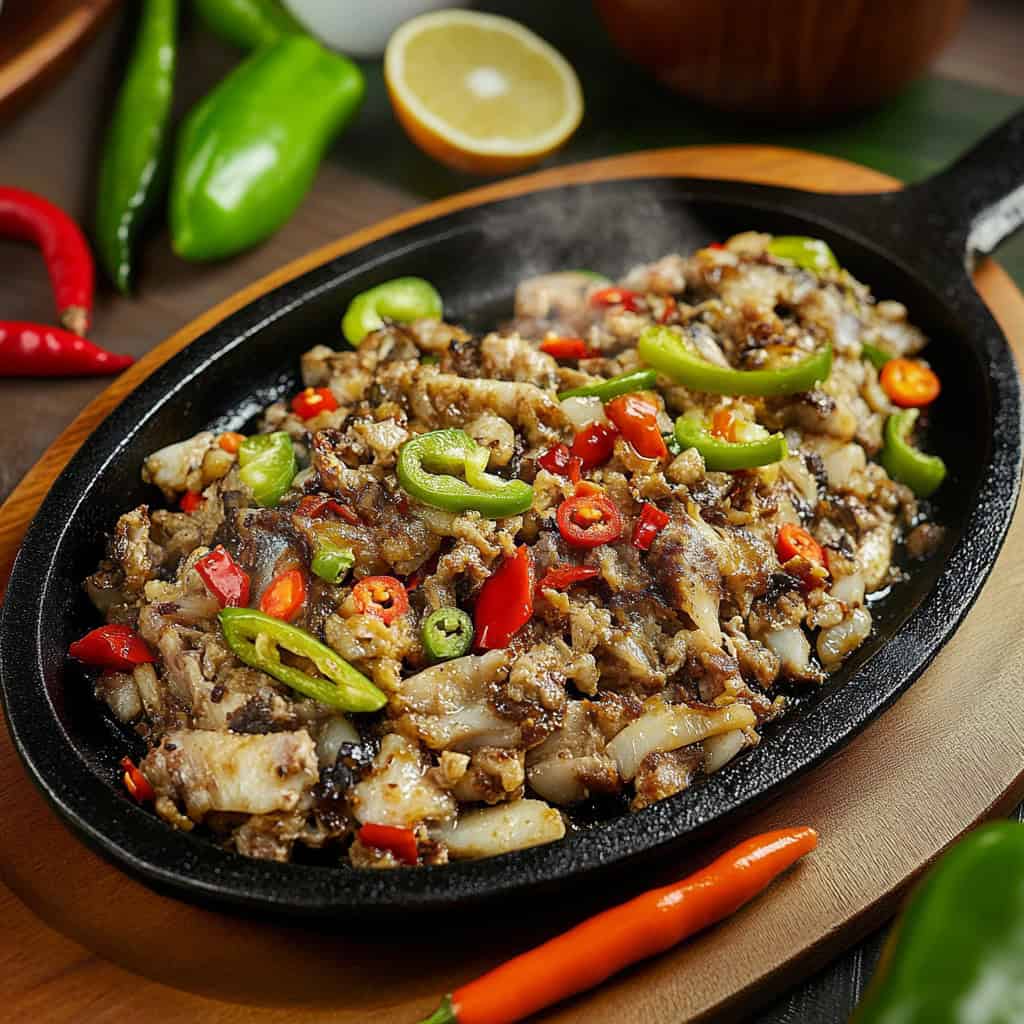
Why You'll Love This Recipe
- Healthier Alternative: A lighter version of the traditional pork sisig without compromising on flavor
- Budget-Friendly: Bangus (milkfish) is more economical than pork face cuts
- Quick to Make: Ready in under 45 minutes
- Versatile: Perfect as pulutan (appetizer) or ulam (main dish)
- Customizable Heat Level: Easily adjust the spiciness to your preference
Ingredients
These ingredients create the perfect balance that makes Bangus Sisig irresistible. Milkfish provides a healthier protein base that crisps beautifully while staying tender inside. The aromatic combination of onions and garlic forms the savory foundation, while bell peppers add sweetness and crunch.
The two types of chilies deliver layers of heat - immediate punch and lingering warmth. Calamansi juice contributes the essential tangy brightness that cuts through richness, while Knorr seasoning adds depth and umami.
The optional mayonnaise and egg create creaminess that binds everything together, mimicking the richness of traditional pork sisig without the high cholesterol.
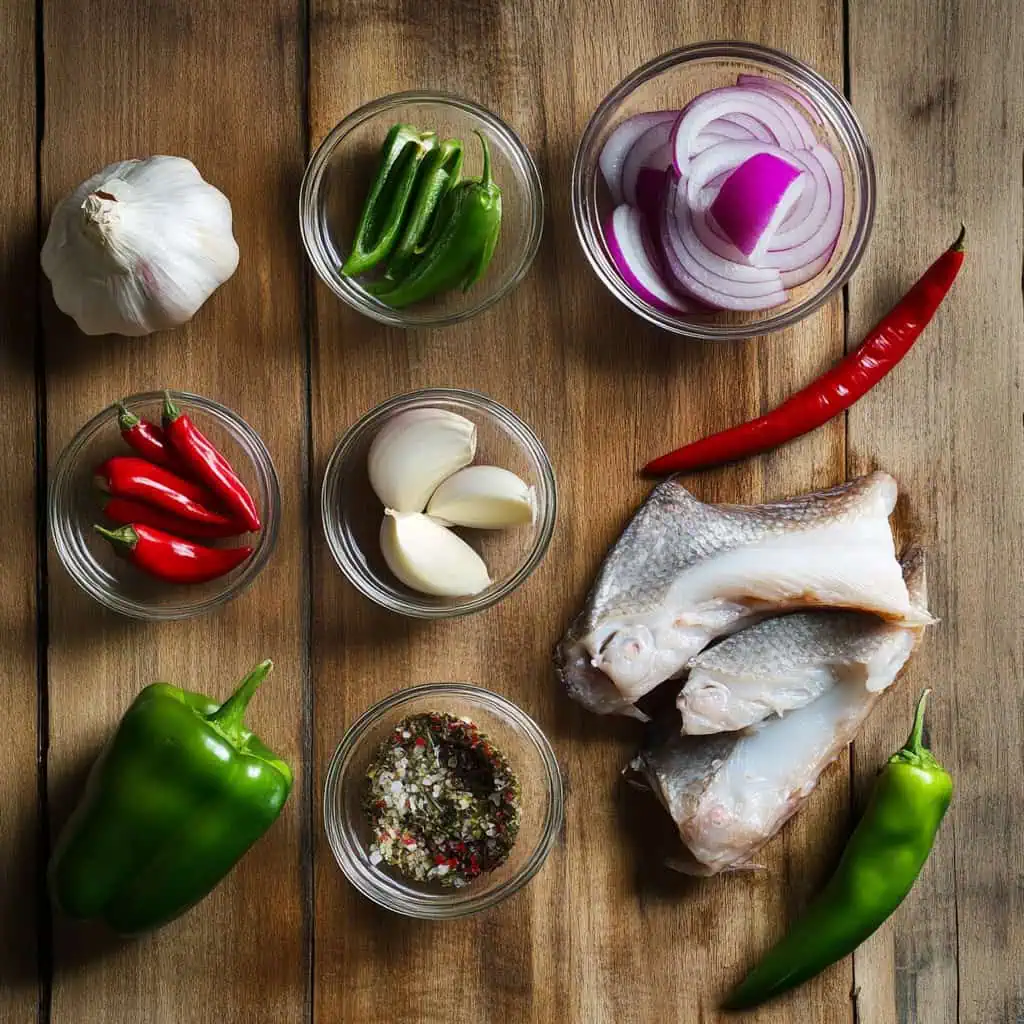
For the Fish:
- 2 whole bangus (milkfish), about 500g each
- Salt and pepper to taste
- 2 cups cooking oil for frying
For the Sisig Mixture:
- 1 large red onion, finely chopped
- 4 cloves garlic, minced
- 1 green bell pepper, finely diced
- 1 red bell pepper, finely diced
- 4 Thai chili peppers (siling labuyo), finely chopped
- 2 finger chilies (siling haba), thinly sliced
- ¼ cup calamansi juice
- 2 tablespoons Knorr seasoning sauce
- 2 tablespoons mayonnaise (optional)
- 1 raw egg (optional, for topping)
Equipment
- Kawali (wok) or deep frying pan: For frying the bangus to golden perfection
- Sizzling plate: Essential for serving and maintaining the dish's signature sizzle
- Sharp knife: For deboning the fish with precision
- Fish scaler: For efficiently removing fish scales
- Wooden spatula: For gentle mixing of ingredients to prevent breaking the fish flakes
- Chopping board: For all preparation work
- Strainer: For draining excess oil from the fried fish
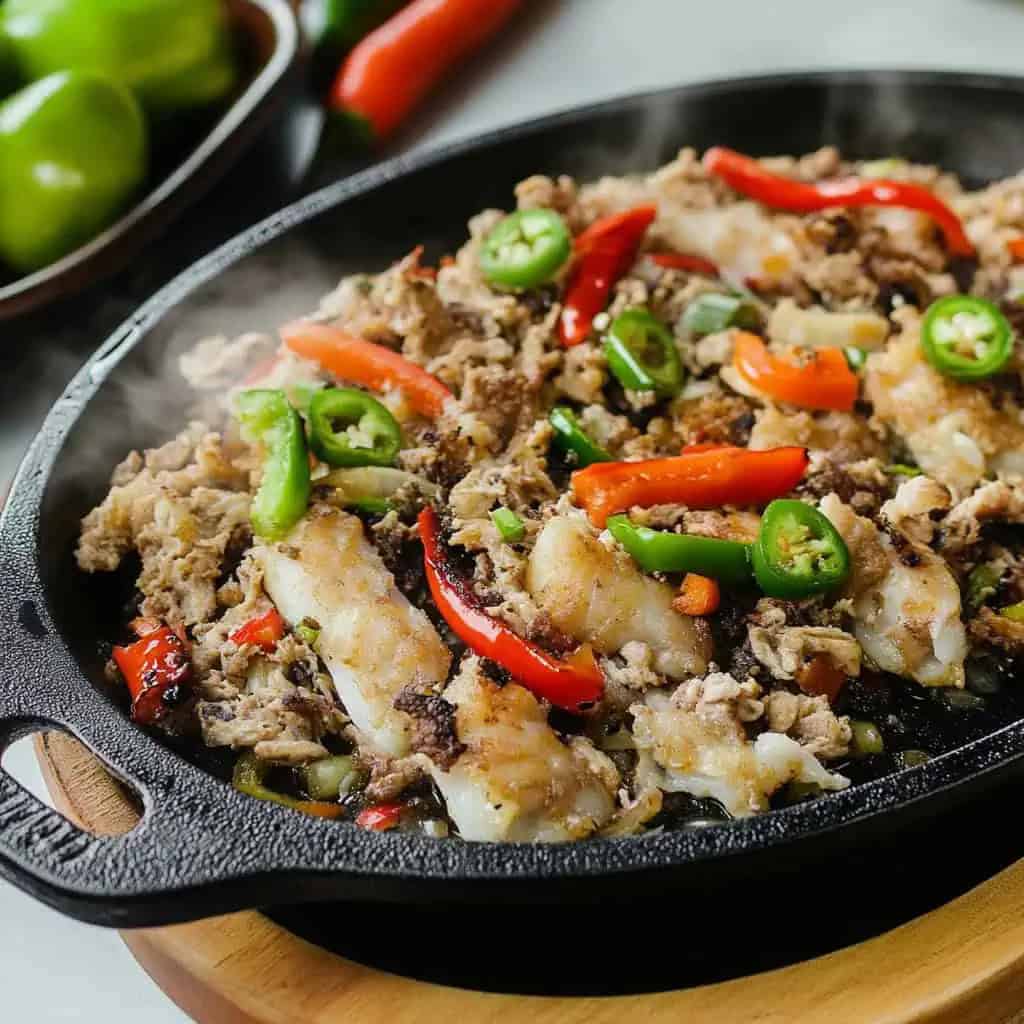
How To Make
- Clean the bangus thoroughly. Remove the scales, take out the innards, and wash it well under cold water. Pat it dry with paper towels and season both sides with salt and pepper.
- Heat enough oil in a pan until very hot. Fry the bangus until golden brown and crispy on both sides, about 8-10 minutes per side. Remove from the pan and let it cool on paper towels.
- Once cool enough to handle, carefully remove all the bones from the fish. Flake the meat into bite-sized pieces, including the crispy skin. Set this aside.
- In a clean pan, heat 2 tablespoons of oil over medium heat. Cook the chopped onions until they turn translucent, about 3 minutes. Add the garlic and cook until fragrant, about 1 minute.
- Add the bell peppers and chilies. Cook these for 2-3 minutes until the peppers are just tender but still have a slight crunch.
- Pour in the calamansi juice and seasoning sauce. Let this simmer for a minute. Add your flaked bangus and gently mix everything together until just heated through. Be careful not to stir too much or the fish will break apart.
- Get your sizzling plate very hot. When it's ready, transfer your bangus sisig onto it – it should make a sizzling sound. If you like, crack a raw egg on top.
- Sprinkle some extra chilies on top if you want more heat. Serve right away while it's hot and sizzling, with rice and extra calamansi on the side.
- Remember to mix everything together on your plate before eating, letting some parts get crispy on the bottom for extra texture.

Tips from Lola's Kitchen
- Choose the Right Fish: Female bangus (with roe) adds extra richness to your sisig. Look for clear eyes, bright red gills, firm flesh, and a fresh ocean smell when selecting your fish.
- Perfect Prep: Butterfly the fish before frying for easier deboning later. This simple step saves you time and frustration when flaking the meat.
- Texture is Everything: Always keep the crispy skin on for that signature textural contrast that makes sisig irresistible. The combination of crispy skin and tender flesh creates magic in every bite.
- The Signature Sizzle: Pre-heat your sizzling plate properly (at least 5 minutes) before transferring the sisig. That sizzling sound isn't just for show—it creates a caramelized crust on the bottom that adds depth of flavor.
- Gentle Handling: When mixing your flaked fish with other ingredients, use a light touch. Overworking the mixture will break down the fish too much and ruin the texture.
- Layer Your Flavors: Add your seasonings gradually and taste as you go. The perfect balance of sour, savory, and spicy is what makes sisig unforgettable.
Substitutions
- Fish Options: No bangus? Try tilapia, salmon, or galunggong (mackerel scad). Each brings a different flavor profile but works wonderfully with the sisig preparation.
- Citrus Alternatives: If calamansi isn't available, use a 2:1 ratio of lime to lemon juice to approximate that distinctive flavor.
- Seasoning Swap: No Knorr? Combine 1 tablespoon soy sauce with 1 tablespoon liquid seasoning or fish sauce as a substitute.
- Chili Choices: Substitute Thai chilies with bird's eye chilies for similar heat, or use regular red chilies for a milder kick.
- Pepper Alternatives: Mixed capsicums or sweet mini peppers can replace bell peppers if needed.
Troubleshooting
- Dry Sisig: If your sisig turns out too dry, add a splash of liquid seasoning or a tablespoon of mayonnaise to bring back moisture without diluting flavor.
- Overly Salty: Balance excess saltiness with additional calamansi juice or a small amount of sugar to round out the flavors.
- Fish Falling Apart: If your fish is breaking down too much, you likely overcooked it during the initial frying. For next time, reduce frying time slightly and be extra gentle when flaking and mixing.
- Not Sizzling Properly: Make sure your serving plate is extremely hot before transferring the sisig. Pre-heat it for at least 5 minutes on high heat for that perfect sizzle.
- Too Spicy: If you've gone overboard with the chilies, add a small amount of mayonnaise or a squeeze of calamansi to tame the heat without compromising flavor.
Storage & Reheating
- Refrigeration: Store leftovers in an airtight container for up to 3 days. The flavors actually develop nicely overnight, though the texture won't be quite as perfect as fresh.
- Freezing: Not recommended as the texture will significantly change upon thawing. The fish becomes mushy and the vegetables lose their crispness.
Reheating Methods:
- Best Method: Use a pan over medium heat until hot, adding a small splash of oil to revive some crispness
- Quick Option: Microwave in 30-second intervals, though this won't restore crispiness
- Ideal Approach: If possible, store the components separately and assemble fresh on a hot plate when ready to serve again
Fresh is Best: While storage is possible, bangus sisig is truly at its prime when served immediately off the sizzling plate.

FAQ
Can I make this ahead of time for a party?
While best served fresh, you can prepare all components up to 4 hours ahead. Store the cooked flaked fish and vegetable mixture separately in the refrigerator, then combine and heat on your sizzling plate just before serving.
How do I handle all the tiny bones in bangus?
After frying, let the fish cool slightly then work methodically from head to tail, using your fingers to feel for bones. A good trick is to work under good lighting and use tweezers for those particularly stubborn fine bones.
Is this recipe spicy as written?
The recipe as written provides a medium heat level that most people can tolerate. If serving to guests with varying spice preferences, keep the chilies on the side so everyone can adjust to their taste.
Can I use boneless bangus to save time?
Absolutely! Store-bought boneless bangus works perfectly and saves significant prep time. Just adjust your frying time since these fillets are thinner than whole fish.
What's the best drink to pair with bangus sisig?
Traditionally, sisig pairs beautifully with ice-cold beer. For non-alcoholic options, try calamansi juice, a cold soda, or even coconut water for a refreshing contrast to the dish's rich flavors.
Why add the egg on top?
The optional raw egg adds richness and creates a creamy sauce when mixed with the hot sisig. As it cooks on the hot plate, it binds the ingredients together beautifully. It's traditional but completely optional based on your preference.
Can I make this in a regular pan if I don't have a sizzling plate?
Yes, a heavy cast-iron skillet works as an alternative. Heat it well before adding your sisig mixture. While you might miss some of the sizzle effect, the flavors will still be delicious.
How can I make this dish even healthier?
Try air-frying or grilling the bangus instead of deep-frying. You can also increase the vegetable ratio and reduce the optional mayonnaise for an even lighter version.
Related
Looking for other recipes like this? Try these:
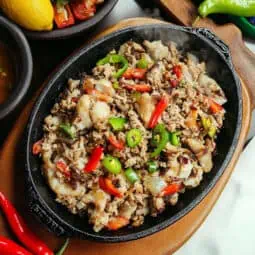
Authentic Bangus Sisig (Milkfish Sisig)
Equipment
- Kawali (wok) or deep frying pan for frying the bangus
- Sizzling plate (ihawan) for serving and maintaining the dish's signature sizzle
- Sharp knife (kutsilyo) for deboning the fish
- Fish scaler (pangkayod) for removing fish scales
- Wooden spatula (sandok na kahoy) for gentle mixing of ingredients
- Chopping board (sangkalan) for preparation work
- Strainer [Salaan] for draining excess oil
Ingredients
For the Fish
- 2 whole bangus milkfish/bangus, about 500g each
- Salt asin and pepper (paminta) to taste
- 2 cups cooking oil for frying
For the Sisig Mixture
- 1 large red onion sibuyas, finely chopped
- 4 cloves garlic bawang, minced
- 1 green bell pepper bell pepper, finely diced
- 1 red bell pepper finely diced
- 4 Thai chili peppers siling labuyo, finely chopped
- 2 finger chilies siling haba, thinly sliced
- ¼ cup calamansi juice katas ng kalamansi
- 2 tablespoons Knorr seasoning sauce
- 2 tablespoons mayonnaise optional
- 1 raw egg optional, for topping
Instructions
- First, clean the bangus thoroughly. Remove the scales, take out the innards, and wash it well under cold water. Pat it dry with paper towels and season both sides with salt and pepper.
- Heat enough oil in a pan until very hot. Fry the bangus until golden brown and crispy on both sides, about 8-10 minutes per side. Remove from the pan and let it cool on paper towels.
- Once cool enough to handle, carefully remove all the bones from the fish. Flake the meat into bite-sized pieces, including the crispy skin. Set this aside.
- In a clean pan, heat 2 tablespoons of oil over medium heat. Cook the chopped onions until they turn clear, about 3 minutes. Add the garlic and cook until you can smell its aroma, about 1 minute.
- Add the bell peppers and chilies. Cook these for 2-3 minutes until the peppers are just tender but still have a slight crunch.
- Pour in the calamansi juice and seasoning sauce. Let this simmer for a minute. Add your flaked bangus and gently mix everything together until just heated through. Be careful not to stir too much or the fish will break apart.
- Get your sizzling plate very hot. When it's ready, transfer your bangus sisig onto it – it should make a sizzling sound. If you like, crack a raw egg on top.
- Sprinkle some extra chilies on top if you want more heat. Serve right away while it's hot and sizzling, with rice and extra calamansi on the side.
- Remember to mix everything together on your plate before eating, letting some parts get crispy on the bottom for extra texture.
Tips from Lola's Kitchen
- Choose female bangus (may bihod/roe) for added richness
- Butterfly the fish before frying for easier deboning
- Keep the skin on for added texture and flavor
- Pre-heat the sizzling plate properly for that signature sisig sizzle
- Don't overcook the flaked fish during final mixing to maintain texture
Nutrition
The Story Behind Bangus Sisig
Sisig's journey from humble beginnings to Filipino food stardom is a tale that perfectly captures our culture's genius for culinary innovation. While the original sisig was born in the railways of Angeles City, Pampanga, in the 1970s, where Lucia Cunanan (known as "Aling Lucing") first served chopped pig's face on a sizzling plate, this bangus version represents the dish's delicious evolution into the 21st century.
As health consciousness grew among Filipino families, creative home cooks began experimenting with the iconic sisig preparation method. Bangus (milkfish), our national fish and a staple in Filipino households, emerged as a brilliant alternative. The fish's naturally flaky texture and ability to crisp up perfectly made it an ideal candidate for the signature sisig treatment. When done right, bangus sisig captures that addictive contrast of textures – crispy fish skin, tender flesh, and crunchy vegetables – that made the original pork version so popular.
What makes bangus sisig particularly special is how it honors the original dish's key elements while creating something entirely its own. The signature sizzle of the hot plate, the sharp citrus notes from calamansi, the heat from siling labuyo, and that perfect balance of sour, spicy, and savory flavors remain intact. Yet, it's lighter, healthier, and more accessible to those watching their cholesterol or avoiding pork. This adaptation showcases the adaptability of Filipino cuisine and our ability to preserve tradition while embracing change.
Today, you'll find bangus sisig not just in health-conscious households but also in many carinderias, restaurants, and Filipino family gatherings. It's become so popular that even sisig purists have embraced it as a legitimate variation of the beloved Kapampangan classic. Whether served as pulutan during evening socials or as a main dish for family lunch, bangus sisig proves that healthier alternatives can be just as satisfying as their traditional counterparts.
In many ways, the story of bangus sisig reflects the broader evolution of Filipino cuisine – rooted in tradition yet unafraid to adapt and innovate. It's a dish that bridges generations, satisfying both the traditional palate that craves those familiar sisig flavors and modern diners seeking healthier options. As we continue to see more interpretations of classic Filipino dishes, bangus sisig stands as a shining example of how our cuisine can evolve while maintaining its soul.
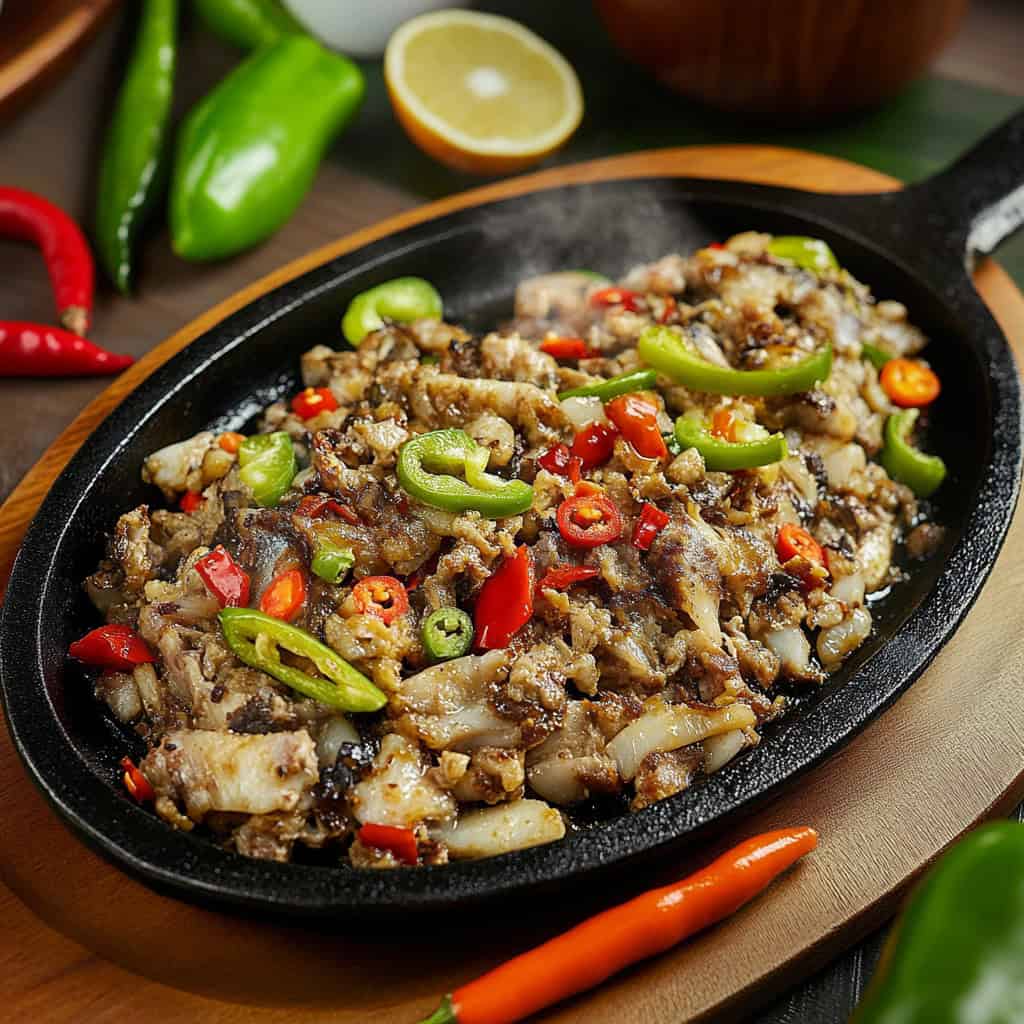

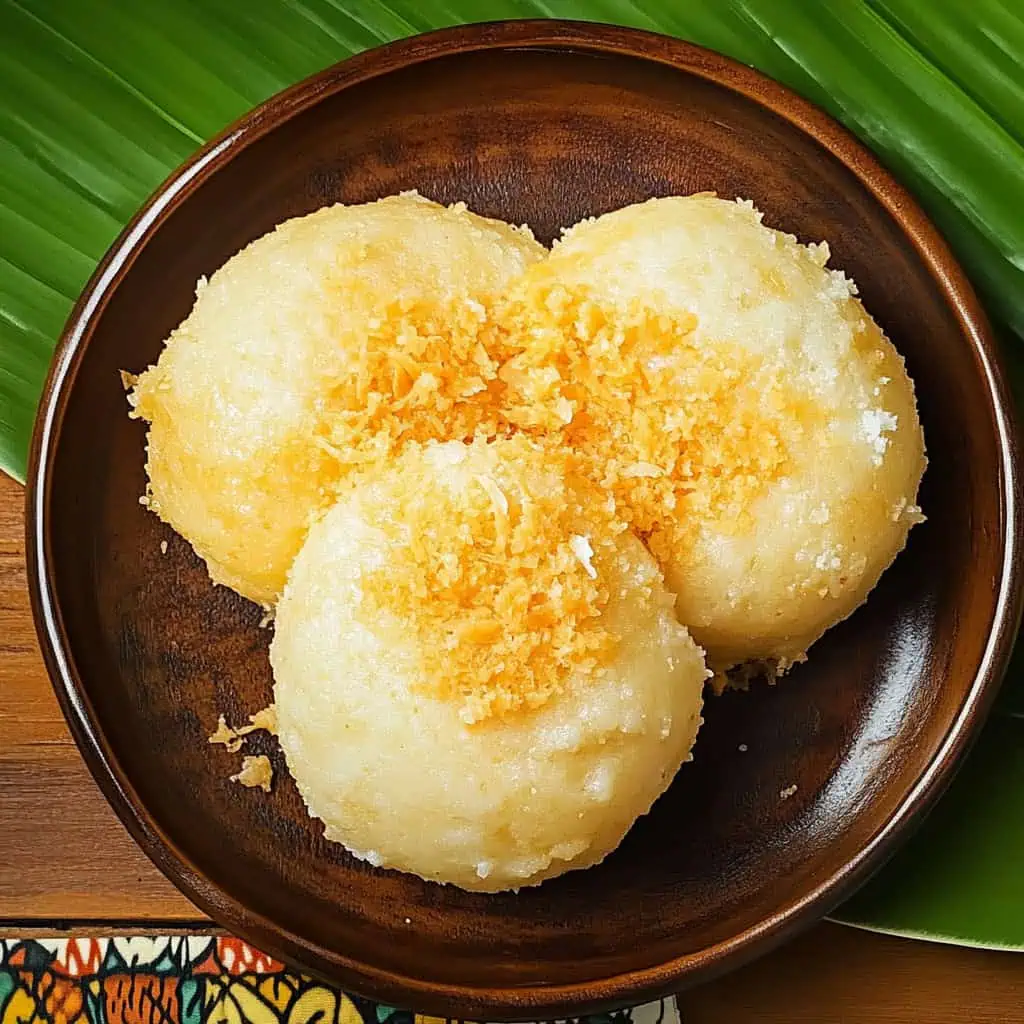
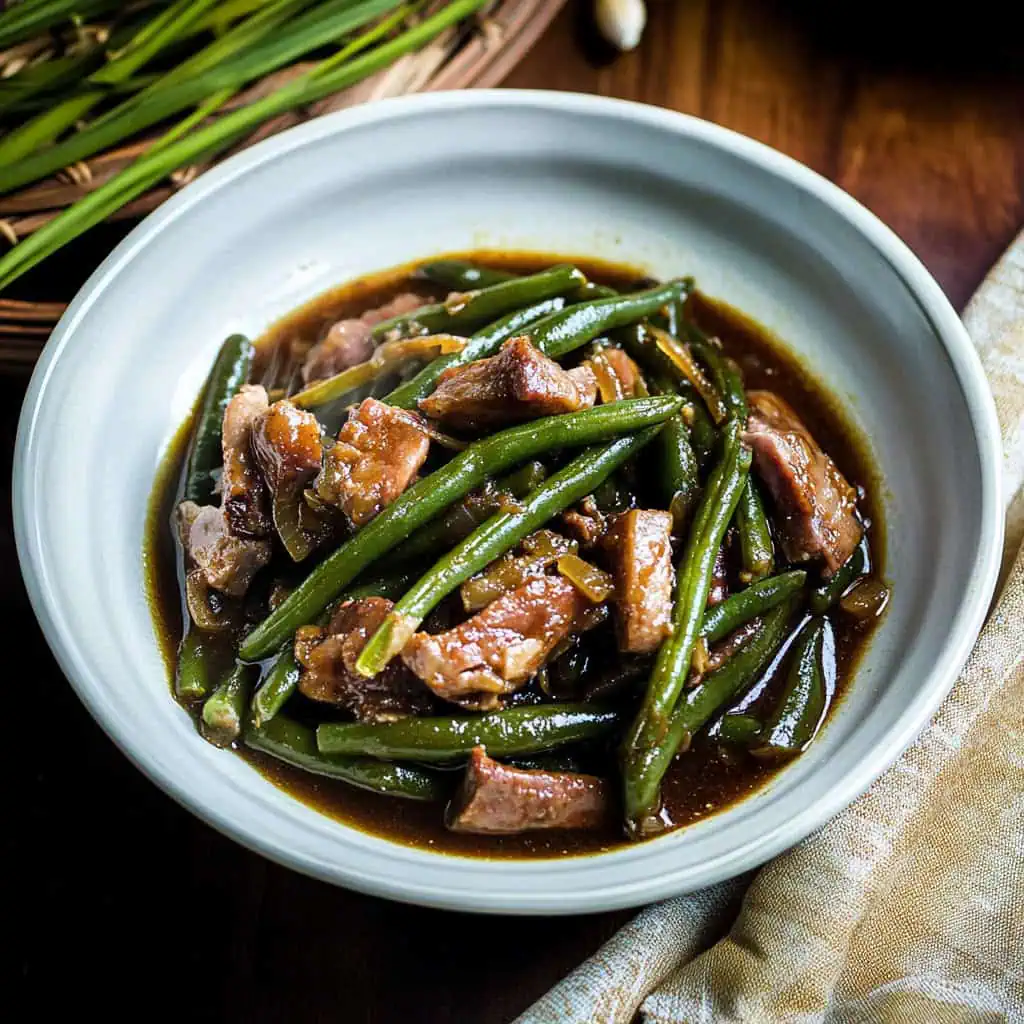
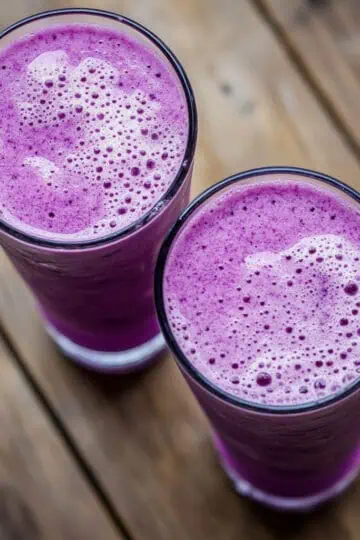
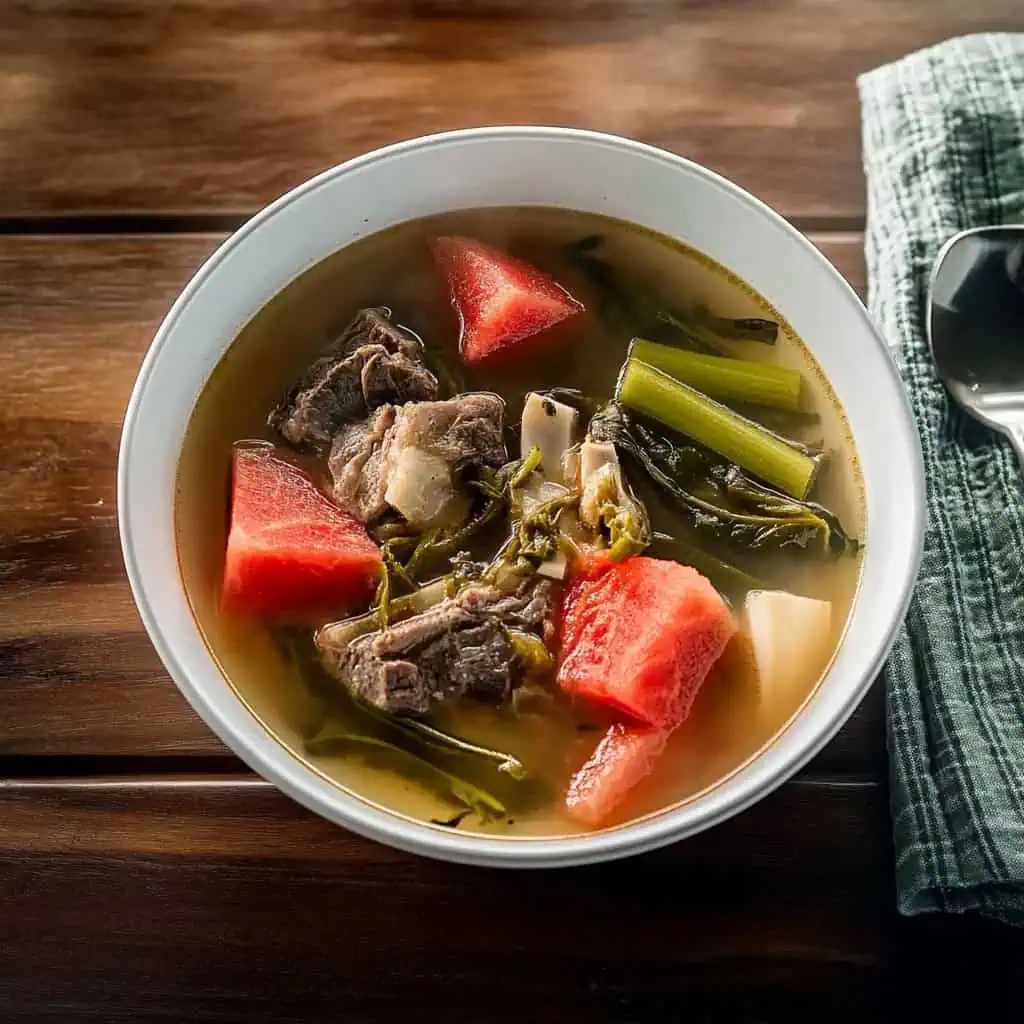


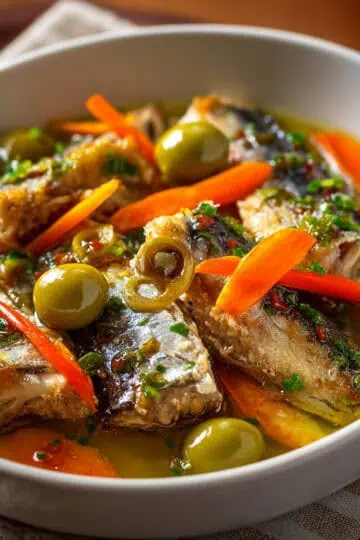

Comments
No Comments